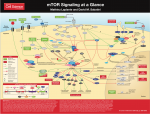I'm taking Jarrow Bile Acid factors and TUDCA, what else were you referring to?
Careful with those, depending on how severe your case and what is going on in your gut these could cause some issues. You need to support both at the same time.
I'm taking Jarrow Bile Acid factors and TUDCA, what else were you referring to?
I am. Plus adding TEMPOL and artichoke extract soon!
What could happen?Careful with those, depending on how severe your case and what is going on in your gut these could cause some issues. You need to support both at the same time.
Such as what? A couple probiotics and micocyline at the moment.What are you doing for the gut?
Careful with those, depending on how severe your case and what is going on in your gut these could cause some issues. You need to support both at the same time.
I wanted to clarify for other people, that I'm just trying to investigate potential upstream causes for why the S1P signaling pathways seem to be impaired in ME/CFS. FXR is just one possibility because of how some people seem to improve or are made worse when the microbiome is modified in different ways by antibiotics, bile acids, foods, probiotics, etc.FXR under activation seems to fit in tighter with nandixon's viewpoint and I have no objection of this notion that underactivation could absolutely be happening.
I wanted to clarify for other people, that I'm just trying to investigate potential upstream causes for why the S1P signaling pathways seem to be impaired in ME/CFS. FXR is just one possibility because of how some people seem to improve or are made worse when the microbiome is modified in different ways by antibiotics, bile acids, foods, probiotics, etc.
But equally likely might be that the S1PR2 receptor (which is also in the intestinal tract and liver) is being dysregulated, because S1PR2 can also act as a bile acid receptor in addition to FXR. The difference is that S1PR2 is activated by conjugated bile acids (in addition to S1P) whereas FXR is activated by deconjugated bile acids. Note that those S1PR2 receptors, when activated, also activate the Akt/mTOR (mTORC1) pathway.
Bottom line: I'm trying to figure out now whether a low S1P problem could be caused by FXR, or simply exacerbated by S1PR2. (I'm hoping to apply some of the information I mentioned earlier here to help sort this out.)
Such as what? A couple probiotics and micocyline at the moment.
Is there a reason you say be careful with these? For me the bile acids caused severe nausea, but TUDCA has always treated me well.
Im currently taking enteragam as part of a multi therapy from my doctors and am thinking its helping. I was going to add Tudca back in soon.
What could happen?
Just TUDCA so far, using 250 mg after breakfast. I do notice some improvement in energy from that. I'll be trying some other bile acids later this week.Have you ever supplemented with conjugated bile acids?
Just TUDCA so far, using 250 mg after breakfast. I do notice some improvement in energy from that. I'll be trying some other bile acids later this week.
And so how do you get things "moving in the gut"?A few things, you can actually worsen toxicity in the liver if things aren't moving in the gut.
This confirms, for me anyway, that the Fluge & Mella results are likely explained by:
??--> Low ceramides--> Low S1P--> Impaired S1P signaling--> Under-activated Akt--> Under-activated mTORC1--> Increased PDKs & SIRT4--> Inhibited PDH complex
